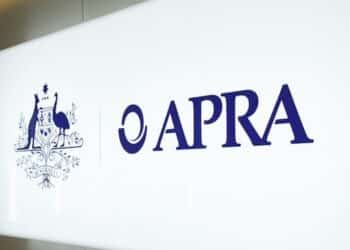With little information having been provided on how the government will change SoA requirements in the Quality of Advice Review’s (QAR) final report, industry experts remain optimistic that the removal of SoAs will be positive for the financial advice industry.
However, the industry is divided on the impacts of the removal, with mainly two schools of thought about SoAs among advisers.
Speaking exclusively to ifa, BT Financial Group chief executive officer Matt Rady said that the removal of the SoA will lead to a decrease in the burden of producing SOAs for advisers.
“Ultimately, if adopted, the recommendations should make advice more affordable, largely from the reduced burden that accompanies the production of an SoA,” Mr Rady said.
“Not only are we talking about reduced cost, but reduced time to serve, which means more ability to serve more clients. This increase in ‘supply’ of financial advice services can also help to reduce costs overall.”
The increase in financial advice services and the ability to service clients would make it more accessible to a larger population, ultimately making it more affordable. However, the success of the QAR reforms will depend on how the SoA requirement is replaced, ensuring that the minimum content is agreed upon and remains fit for purpose for the client while allowing for flexibility and innovation.
BT head of financial literacy and advocacy Bryan Ashenden told ifa that in their current format, SoAs are lengthy and legalistic.
“In its current form, it doesn’t meet the Corporations Act requirements of being clear, concise, and effective,” Mr Ashenden said.
“Notably, the report’s recommendation requires an adviser to ask their client if they want something documented, and provide it if they do. We believe the requirement to provide something will be part of any legislated change here. But the key will be ‘what’ it contains and ‘how’ it looks.”
Mr Ashenden said one of the key benefits of removing the SoA requirement is that it will allow for greater flexibility and innovation in the way advice is delivered.
This includes different forms of communication, such as PowerPoint presentations, videos, or animated presentations, which help to make financial advice more engaging and accessible to a wider range of clients.
However, there are concerns that removing the SoA requirement could leave clients vulnerable to poor advice and unscrupulous advisers. The SoA provides a clear and comprehensive record of the advice given to the client, which is essential for ensuring that the advice is appropriate and meets their needs.
The QAR report acknowledges this concern and recommends that advisers should still be required to provide a record of the advice given to the client on request. This would ensure that clients have access to a clear and comprehensive record of the advice they have received, which they can use to evaluate the quality of the advice and hold their adviser accountable if necessary.
The success of the QAR reforms will ultimately depend on how the removal of the SOA requirement is implemented, according to Mr Ashenden.
The key will be to get the content and format of the record of advice right from the start. This will require careful consideration of what information needs to be included in the record, as well as the format in which it is presented to the client.
It will also be important to ensure that advisers are adequately trained to provide clear and effective advice without the support of the SoA. This will require a significant investment in training and education, both for existing advisers and for new entrants in the industry.
“We need to keep the ‘what’ to a minimum from a legislative perspective — but importantly, get it right and agree in terms of that minimum content the first time we legislate the change, so we don’t have amendment upon amendment upon amendment,” Mr Ashenden said.
“The ‘how’ is also important, and perhaps should be less prescriptive — so whether a written document like today, or a PowerPoint presentation, a video or animated presentation. Let’s try to allow for flexibility and innovation in this regard and something that is fit for purpose for the client.”




Interesting article. There is no restriction in the present legislation on the method of delivery of the Statement of Advice. There are advisers who have been using Power Point Presentations for years.
Secondly any one who has been in the industry for a lengthy time will recall that Financial Plans were provided to clients back in the 90s and these were anything from 30 pages upto 100 pages long; also covering many of the aspects of a Statement of Advice.
So the problem is we don’t like being told what to do (even though it was being done before it was legislatec)?
With the greatest respect to all the people in the financial planning industry and those that have left clients shold be entitled to receive the advice in writing just don’t fill the delivery mechanism with irrelevant marketing information and generic text the does not apply to them.
Get rid of SoAs – Accountants, Mortgage Brokers and Lawyers do not need them, have lower PI cover and deal with larger sums than most retail clients. Stop the red tape!!